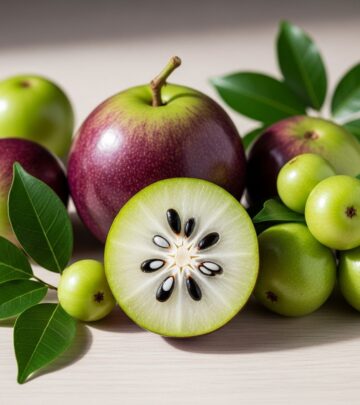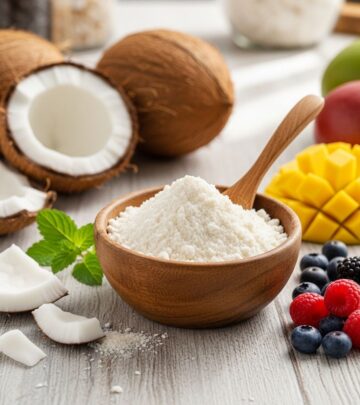White Eggs vs Brown Eggs: Dispelling Myths & Exploring Differences
Shell pigment doesn’t affect flavor or nutrition, freshness and hen diet matter most.

White Eggs vs Brown Eggs: A Complete Guide to Differences, Myths, and Facts
Eggs are a staple in kitchens worldwide—served boiled, fried, scrambled, or baked into countless recipes. Yet, many shoppers debate: Are brown eggs healthier than white eggs? Do they taste different? Is one worth a higher price? This comprehensive guide demystifies the truth behind white vs brown eggs, exploring the science, origins, and practical implications of shell color.
Table of Contents
- Introduction
- Why Are Eggs Different Colors?
- Nutritional Differences: Fact vs Fiction
- Protein and Other Key Nutrients
- Do Brown and White Eggs Taste Different?
- Price Differences: Why Are Brown Eggs More Expensive?
- Other Influences on Egg Quality
- How to Choose the Best Eggs
- Frequently Asked Questions
Introduction
At first glance, the most noticeable difference between eggs in the supermarket is often their shell color: stark white or rich brown. This visible variation has led to widespread perceptions—brown eggs are often labeled as “healthier” or “more natural,” while white eggs are seen as “cheaper” or “more processed.” But are these beliefs grounded in fact? Let’s find out.
Why Are Some Eggs White and Others Brown?
The primary determinant of an egg’s shell color is the breed of the hen that lays it.
- White eggs are typically laid by hens with white feathers and white earlobes.
- Brown eggs generally come from hens with red or brown feathers and red earlobes.
This color difference is caused by natural pigments deposited on the eggshell at the very end of the egg-forming process inside the hen. The main pigment for brown eggs is protoporphyrin IX (a byproduct of hemoglobin), while other pigments, such as biliverdin, can create blue or green eggs in specific breeds.
| Egg Shell Color | Main Hen Breed | Primary Pigment |
|---|---|---|
| White | White Leghorn, Ancona | None (no pigment) |
| Brown | Rhode Island Red, Plymouth Rock | Protoporphyrin IX |
| Blue/Green | Araucana, Ameraucana | Oocyanin (biliverdin derivative) |
Shell color does not indicate the quality, freshness, or nutritional content of an egg; it is purely a genetic trait controlled by the bird’s breed.
Nutritional Differences: Fact vs Fiction
Many consumers believe that brown eggs are more nutritious than white eggs. However, there is no scientific evidence supporting significant nutritional differences between the two shell types.
- Analysis consistently shows that both white and brown eggs contain almost identical amounts of protein, fat, cholesterol, vitamins, and minerals.
- A typical large egg (regardless of shell color) contains about 6–7 grams of high-quality protein, less than 80 calories, and is naturally rich in essential nutrients such as vitamin D, vitamin B12, selenium, iodine, riboflavin, and choline.
- Summary: The nutritional content of an egg is determined more by the environment, diet, and welfare of the hen, rather than shell color.
Factors That Do Affect Egg Nutrition:
- Hen Diet: Hens fed omega-3-rich diets produce eggs with higher omega-3 fatty acids. Vitamin D content increases if hens have access to sunlight or are given vitamin D-enriched feed.
- Hen Living Conditions: Free-range and pasture-raised hens may produce eggs with different nutrient profiles due to access to varied diets and sunlight.
Is There a Protein Difference?
One commonly cited myth is that brown eggs offer more protein or are “heartier” than white eggs. In reality, both types of eggs provide similar amounts of protein:
- 1 medium egg contains approximately 6.3–6.4 grams of protein regardless of shell color.
These slight differences that sometimes occur are mostly due to egg size, not shell color or breed.
Do Brown and White Eggs Taste Different?
Many people swear they can taste a difference between brown and white eggs, claiming one is richer or more “eggy” than the other. However, scientific studies have shown:
- There is no inherent taste difference between brown and white eggs.
So why do eggs sometimes taste different?
- Hen Diet: Feed composition can influence flavor—hens that eat more varied or higher quality feed may produce eggs with distinct taste notes.
- Freshness: Eggs consumed closer to the laying date generally taste better, regardless of color.
- Cooking Method: The way you prepare eggs (boiled, fried, scrambled) can alter both flavor and aroma.
- Hen Environment: Eggs from backyard or pasture-raised hens often arrive fresher and with less processing, accounting for perceived taste differences.
In summary, when it comes to flavor, it’s not the shell, but the hen and the freshness that matter.
Price Differences: Why Are Brown Eggs Often Pricier?
Supermarkets and local markets frequently price brown eggs higher than white eggs. Here’s why:
- Breed Size: The breeds that lay brown eggs are generally larger and require more food to produce an egg, increasing production costs.
- Market Perception: Brown eggs are often marketed as more natural or premium, influencing price expectations and consumer demand.
- Traditional Preferences: In some regions, white eggs are standard and more economically produced on larger commercial farms, while brown-egg-laying breeds may be chosen by smaller or specialty farms.
However, this price difference is not reflective of nutritional quality—it is mainly a result of production economics and consumer perceptions.
Other Influences on Egg Quality
Beyond shell color, several other factors play a major role in the quality and nutrition of eggs:
- Hen Welfare: Free-range and pasture-raised eggs often come from birds with access to the outdoors and varied diets, potentially boosting certain nutrients.
- Hen Stress Levels: Stress or crowded conditions can influence egg quality—happier, healthier hens can lay higher-quality eggs.
- Egg Handling and Storage: The faster eggs reach the consumer after being laid, and the better they are stored, the better their taste and nutrient retention will be.
How to Choose the Best Eggs: Practical Guidelines
- Ignore Shell Color: Select based on freshness, production method (organic, free-range, pasture-raised), and personal values—not color alone.
- Check Labels: Terms like “free-range,” “organic,” or “Omega-3 enriched” indicate specific farming practices or enhanced nutrients.
- Consider Local Sources: Eggs from local or backyard sources might be fresher and often come from smaller flocks with varied diets.
- Inspect for Quality: Look for clean, uncracked shells, and check dates to ensure freshness.
In the end, nutritional value is influenced by the chicken’s diet, environment, and handling—not by whether the egg is brown or white.
Frequently Asked Questions (FAQs)
Are brown eggs more nutritious than white eggs?
No. Scientific evidence shows both types offer similar nutrition. Any differences are linked to the hen’s feed and living conditions, not the eggshell color.
Do brown eggs taste different?
Eggshell color has no direct effect on taste. Differences in flavor are more likely due to the hen’s diet, the egg’s freshness, and the way the egg is prepared.
Why are brown eggs sometimes more expensive?
Brown-egg-laying hens usually eat more, raising production costs. Marketing and consumer perception also play a role—but the eggs are not healthier or better solely due to color.
Is there a difference in protein content between white and brown eggs?
No. Both types provide comparable protein levels. On average, a medium egg, whether white or brown, has about 6–7 grams of protein.
Can shell color indicate the farming method?
Shell color reflects breed genetics, not farming practices. For farming method details, check for terms such as “organic,” “free-range,” or “pasture-raised” on packaging.
Why are blue or green eggs sometimes available?
Specialty breeds like Araucana or Ameraucana hens lay blue or green eggs due to unique pigmentation. These eggs are nutritionally similar to brown and white varieties.
Key Takeaways
- Shell color does not determine nutrition, taste, or quality.
- Brown eggs are not healthier than white eggs.
- Hen’s diet, environment, and welfare matter most for egg quality.
- Price differences are typically due to higher production costs and marketing, not nutritional value.
Summary Table: Quick Comparison
| Feature | White Eggs | Brown Eggs |
|---|---|---|
| Shell Color | White | Brown |
| Typical Hen | White-feathered, white earlobes | Brown-feathered, red earlobes |
| Nutrition | Similar | Similar |
| Taste | Influenced by diet/freshness, not color | Influenced by diet/freshness, not color |
| Price | Usually less expensive | Usually more expensive |
| Main Uses | All culinary uses | All culinary uses |
References
- Healthline – Brown vs. White Eggs: Is There a Difference?
- EggInfo – Brown vs White Eggs
- Star Milling – White Eggs vs Brown Eggs
References
Read full bio of medha deb













